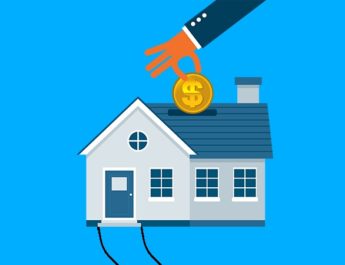The US land market has been performing exceptionally well since the past two decades. However, experts believe it can still be a great investment option, especially with the growing demand for land while the supply being fixed at 2.3 billion acres.
Table of Contents
How Does the Demand Grow?
There are many factors that trigger growth in the demand for land. Some of the more important ones include economic and export conditions, uses of land, resources, consumer confidence, interest rates, financing availability and employment.
While all these factors are currently positive and working in favor of demand for land in the country, there’s one opposing factor as well, which is falling farmland values.
However, the consumer confidence has been steadily increasing despite that bit of a hurdle, and according to NBC News, it has recently hit a new high of 127.4.
What Boosts Optimism?
The overall environment is quite optimistic for the land market in the US currently. And it’s backed by factors like better employment levels, increased corporate earnings, higher wages, increasing retail spending, historically low-interest rates and more.
Would the Optimism Continue in the Future?
While no one can answer this question for sure, all the indicators look pretty positive right now. One of the most important factors – interest rates – have remained low since a while now, and it doesn’t look like they will be increasing much anytime soon.
On the other hand, the inventory of homes on sale has been decreasing, which means that the future trends look just as positive, if not better.
Are Farmland Values a Big Worry?
A few years back, maybe they were a serious worrying factor. In recent years, however, they certainly don’t seem to be much of a negative factor.
The commodity prices aren’t doing as bad as before, which has led to the farmland values in the country to stop their fall and slowly start going up again.
Of course, they still haven’t been increasing anywhere in line with the other land values – as the global commodity markets are still far from being at their best – but the recent trends certainly aren’t too worrying.
What About the Opportunities?
After discussing everything that we did above, it’s pretty clear that there still seem to be plenty of opportunities in the US land market.
Construction is still on a rise in the country, while the inventory of homes has been decreasing. This situation further indicates a positive future for the US land market when you consider the fact that the consumer discretionary income has been increasing as well.
In addition to that, the financing availability is only getting better, while the historically low-interest rates make the loans cheaper.
Finally, while the agricultural land values might seem to be a concern, they may improve much faster than you can imagine, especially with the global commodity markets showing some signs of a rebound and the increasing global demand for agricultural goods.
We all learned in economics class about supply and demand and how they affect the price.
If demand goes up, but supply can’t match it, that drives up the price.
So if you are going to invest in something, you should keep that principle in mind.
And where do we see increasing demand right now where supply cannot possibly keep up? US land. Rural land, in particular.
Why Buy Rural US Land? Here are the Stats
- The US contains 2.3 billion acres of total land.
- Out of those 2.3 billion acres, there are 922 million acres of ag-land. Agricultural products are responsible for $985 billion of the US GDP plus more than 23 million jobs. That is a hefty chunk of the US economy.
- There are also 73 million acres of rural residential land.
- 66 million acres of American soil is development urban land.
- Since 2016, pasture value per acre has gone up $20.
- Since 2016, farm real estate value per acre has gone up $70.
- Cropland value per acre holds strong at $4,090.
What is Pushing Up Demand for Rural US Land?
- The economy has achieved significant recovery since the recession. This is plain if you look at data on wages, employment, interest rates, the stock market, and lumber prices. So consumer confidence has surged (it was just 37.4 in January 2012, and now it is up to 1 in 2019). So the demand has increased.
- Now is the time to build. The cost of housing is soaring across the country right now, particularly along the West Coast. There is simply not enough housing to go around, so developers are making a push to build new communities on existing rural land.
- Millennials love to travel and enjoy visiting rural destinations. So the tourism value of rural land has gone up.
- The need to feed a hungry populace hasn’t diminished. It just continues to grow, further fueling the value of agricultural land, especially when it comes to growing products like corn, cotton, soybeans and wheat. Pork is also big right now.
- There is an increased opportunity to turn a profit in agriculture right now since farms are becoming more energy-efficient.
Your Ideal Investment Is Waiting For You
Trends come and go, but rural land’s scarcity is here to stay, along with its ever-growing demand. And thanks to online resources, buying land is now easier than ever. Search LandHub if you are ready to find your next investment.




